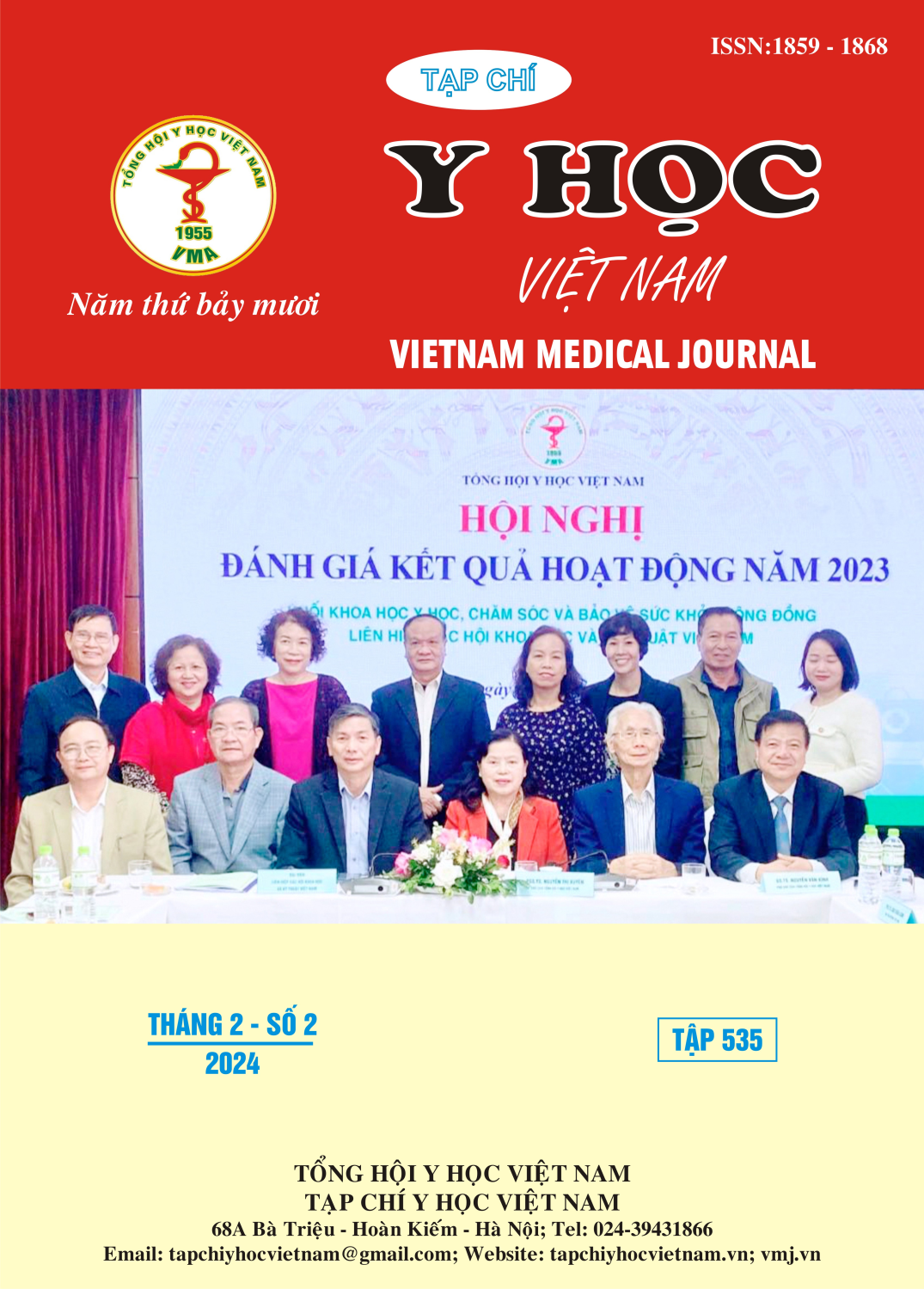THE INVESTIGATION OF TRADITIONAL MEDICINE TONGUE FEATURES ON POST-ISCHAEMIC STROKE PATIENTS IN BINH DINH PROVINCE
Main Article Content
Abstract
Objectives: This study aimed to explore traditional medicine (TM) tongue features in post-ischaemic stroke patients in Binh Dinh province. Methods: In a descriptive cross-sectional study from November 2022 to May 2023, the study collected 205 tongue samples of post-ischemic stroke patients in Binh Dinh Hospitals province and then analysed tongue characteristics: tongue colour, tongue coating colour, tongue body shape feature, and tongue coating proper feature through the automatic tongue diagnosis system (ATDS). Results: The distribution rate of traditional medicine clinical syndrome in the stage of post-ischaemic stroke in the recovery stage with kidney yin deficiency (28.78%), low phlegm (24.88%), liver yang prosperity (23.41%), qi deficiency, blood stasis (22.44%), and kidney yang deficiency (0.49%). The most common characteristic features are the dark purple tongue (60.69%), no or less coating (65.37%), and wet viscous tongues (83.41%)a wet, slimy tongue (83.41%). The majority of tongues are thin (43.41%), tongues have fissures (98.61%), and tongues with spines appear in 55.61%. Conclusion: Tongue features are mainly dark purple, with fissures, little or no coating, and wet viscous tongues. The most common clinical syndrome of post-ischaemic stroke in the recovery phase is liver and kidney yin deficiency, consistent with the average age characteristics of the population ≥60 years old. Although the rate of the clinical syndrome of traditional medicine after cerebral infarction in the form of blood stasis is not the highest, the characteristic purple tongue color (dark purple) accounts for 60.69%. In addition to light purple (9, 27%), purple-pink (4.39%) shows blood stagnation in the viscera and meridians ranging from severe to light purple color. This is consistent with the method of tonic qi and active blood applied to patients with post-ischaemic stroke in the recovery phase
Article Details
Keywords
TM tongue features, post Ischaemic stroke, ATDS.
References
2. Huỳnh Nguyễn Lộc. Thiệt chẩn và ứng dụng lâm sàng. Chương 3.Hình dạng bất thường của lưỡi theo hình thái chất lưỡi. Nhà xuất bản Y học; 2022:28-65.
3. Lê Ngọc Bảo. Khảo sát các bệnh cảnh lâm sàng Y học cổ truyền trên bệnh nhân đột quỵ não giai đoạn phục hồi điều trị nội trú tại các Bệnh viện ở Bình Định. Luận văn Thạc Sĩ. Đại học Y dược TP. Hồ Chí Minh; 2021.
4. Nguyễn Tiến Đoàn. Nghiên cứu một số yếu tố nguy cơ và tiên lượng ở người bệnh cao tuổi bị đột quỵ thiếu máu cục bộ não tại bệnh viện đa khoa tỉnh Phú Thọ. Luận án Tiến Sĩ. Viện nghiên cứu khoa học y dược lâm sàng 108; 2018.
5. Sở Y tế Bình Định. Tình hình bện tật và tử vong tại bệnh viện theo ICD 10. Báo cáo thống kê 2018 Công văn số 1130/SYT-NVD ngày 25/4/2019 của Sở Y tế Bình Định. 2019.
6. Habibi-Koolaee M, Shahmoradi L, Niakan Kalhori SR, Ghannadan H, Younesi E. Prevalence of Stroke Risk Factors and Their Distribution Based on Stroke Subtypes in Gorgan: A Retrospective Hospital-Based Study-2015-2016. Neurol Res Int. 2018;2018:2709654. doi:10.1155/2018/2709654.
7. 姚 中 华, (Yao Zhonghua). 脑梗死中医证型分布规律与舌象 客观化研究. Master thesis. Human university of chinese medicine; 2020.
8. Zhou Peipei, Ji Xuequn, và cộng sự. Bàn luận sự thay đổi hình ảnh lưỡi và các giai đoạn khác nhau của đột quỵ. Y học cổ truyền Quảng Tây. 2018:58-60.
9. Đoàn Hữu Nhân. Khảo sát tỉ lệ trầm cảm và các yếu tố liên quan trên bệnh nhân sau đột quỵ điều trị tại bệnh viện Nguyễn tri phương. Luận văn Thạc sĩ. Đại học Y dược Tp. Hồ Chí Minh; 2019.


